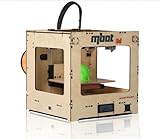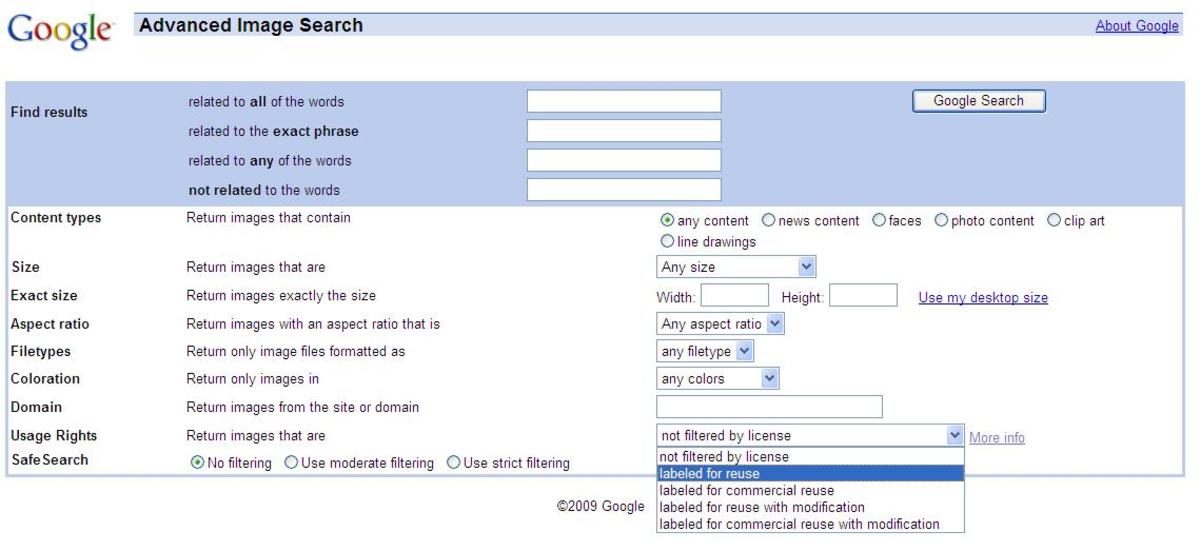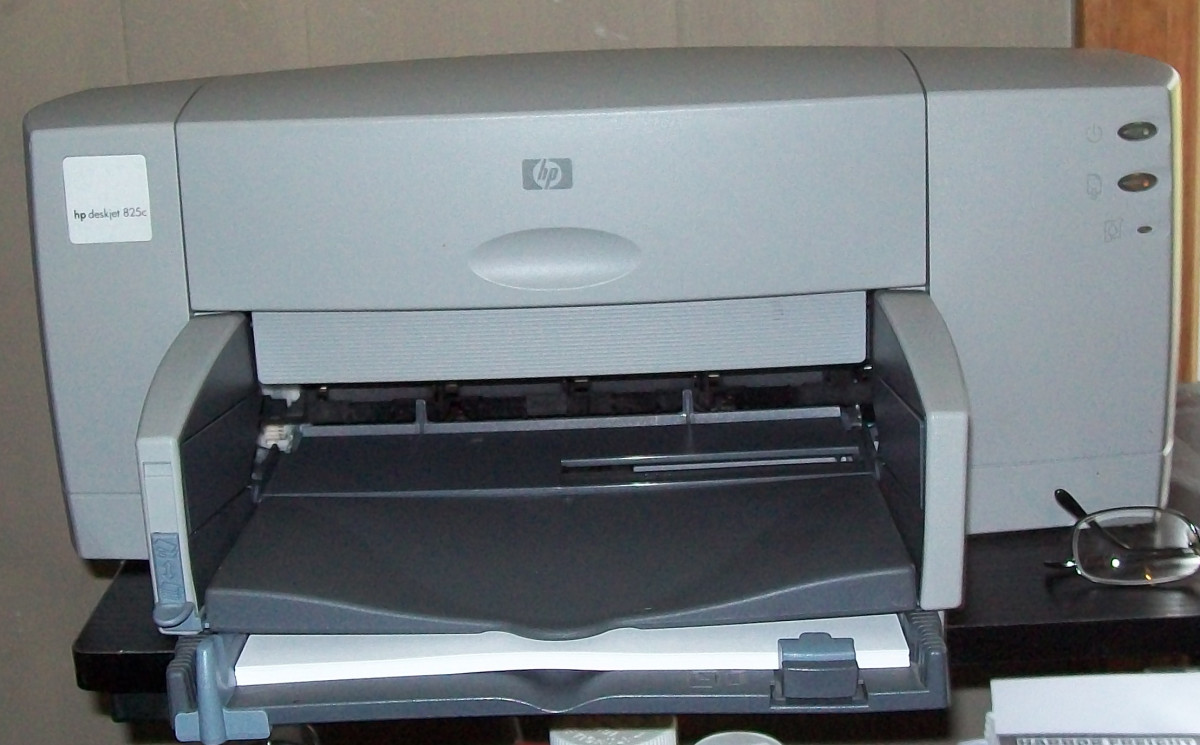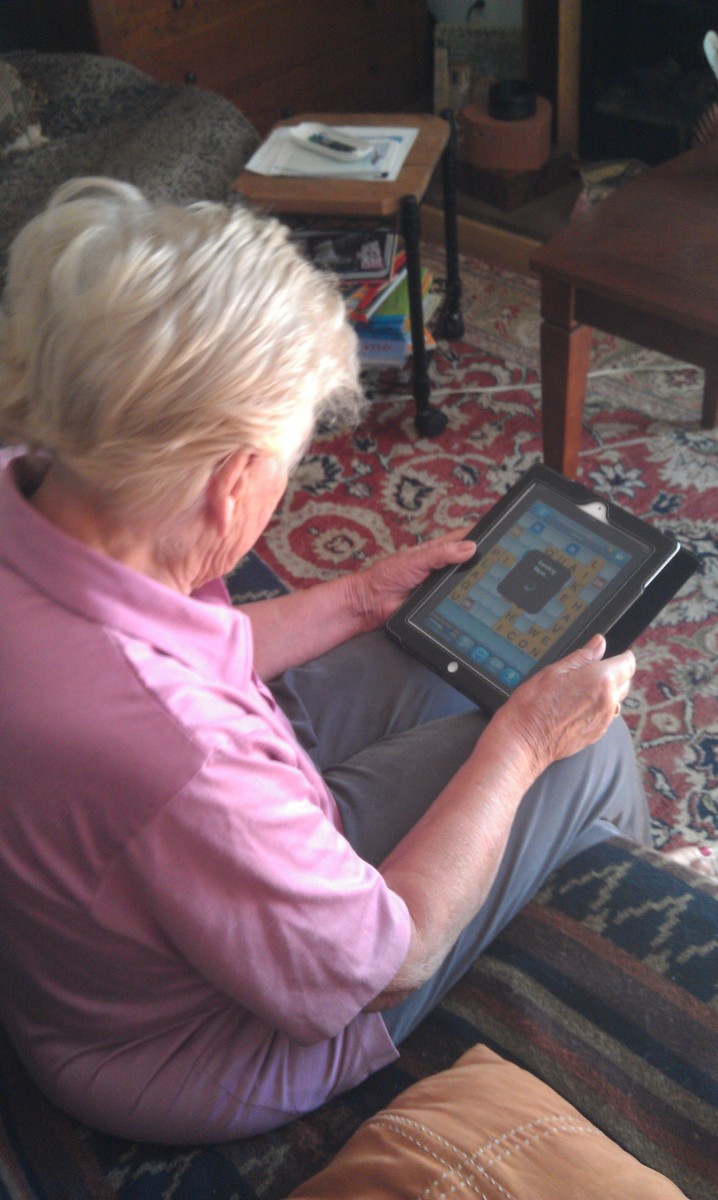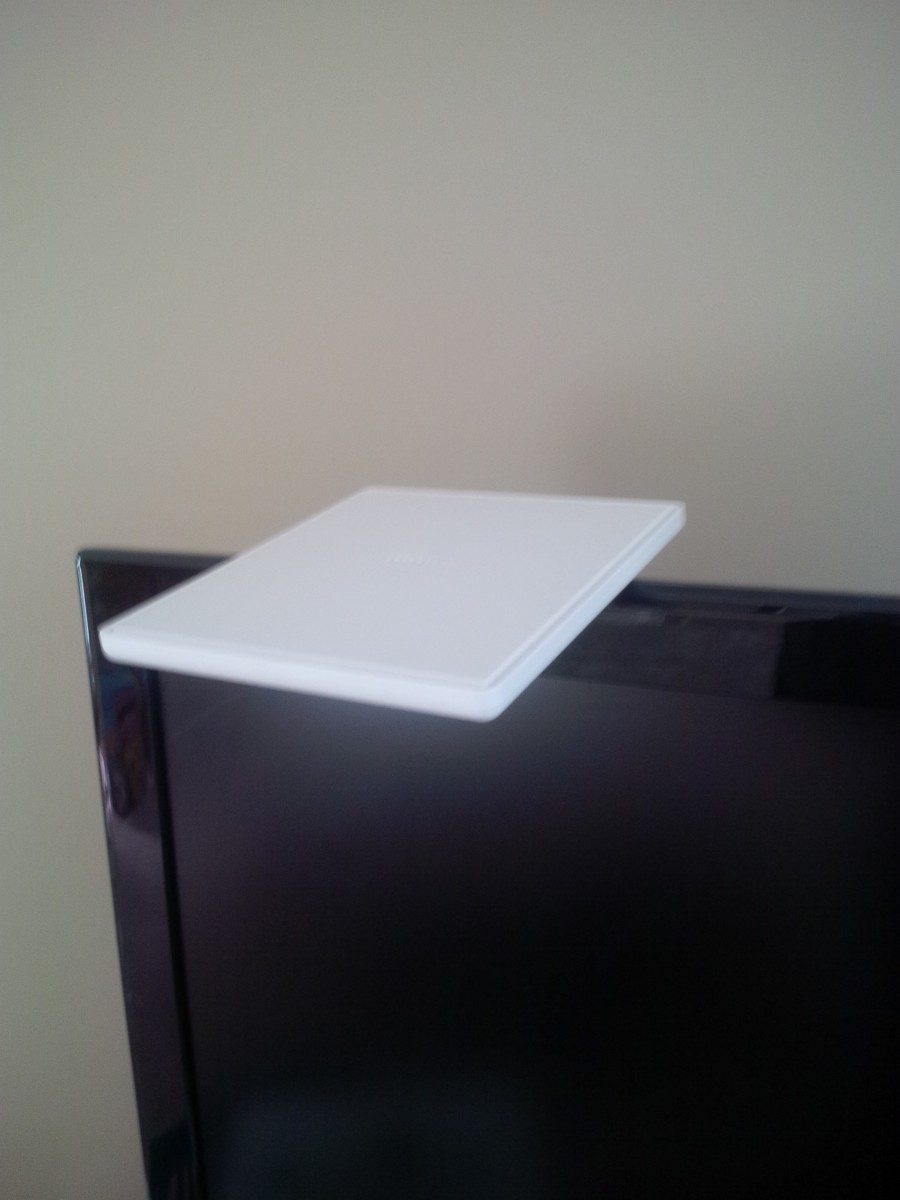For 3D Thinkers - Lytro, Printers
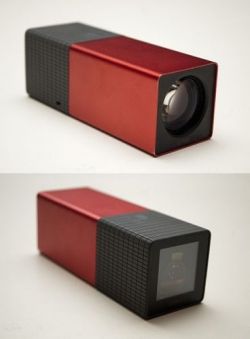
Gadgets That Are Truly Innovative
These are the perfect PRACTICAL gifts for your geek, or, for that matter, the geek in you. Unlike many of the "new" products often promoted in various places on the internet which are merely re-designs of existing products that have been around a long time, this is brand new technology, and it's actually good for something!
The photo on the left is the Lytro Light Wave Camera. The upper photo shows the lens, and the lower photo shows the display. It is operated by pressing on a spot in the gray area in back.
For People Whose Photos are Perpetually Out of Focus - That's Me!
Lytro Light Field Camera
The Lytro Light Field Camera actually uses totally new technology. It was developed by Ren Ng, who was studying light-field photography at Stanford University. Wikipedia explains it this way: "Light field photography (also known as plenoptic photography) captures all the available light in a scene going in every direction. It works by breaking up the main image with an array of microlenses over an image sensor. The camera software then uses this data to determine the directions of incoming light rays."
I like to think of it as being something like recording a hologram, though that may be inaccurate.
As of yet, images are quite small, but the size of the file would still be quite large. I'm waiting for a time when the image is large enough to be used as I now use my photographs, and it has a decent zoom capability. I want to be able to shoot birds at a distance. But then, this is a very good start!

About the Photos
Lytro has a photo gallery on its web site, accessible here
If you go to the gallery, load a picture in the main display. It takes a little while, even with a DSL connection. But it's worth the wait. Then click on a part of the photo you want to be in focus. After it comes into focus, click on another place on the photo. If you move your mouse cursor back and forth, you can see a limited amount behind the object in the foreground when your cursor is in one position, but the portion will be hidden when your cursor is in a different position.
In the first focus, the flower closest to the camera is in focus.

In the second one, the flowers in the background are in focus. Please note: this is the SAME photo!
Lytro Cameras at Amazon
Accessories also available.

Here is another set
Notice how much out of focus the two people in the background are.

This comes from the very SAME photo, after I clicked on the two people in the background. The focus of the woman in the foreground is softened somewhat. If I move my mouse cursor to the right, I can see a little more of the background directly behind her.
The Camera Itself
Scanty details
Lytro doesn't include a lot of technical information about the camera on its web site. What it does present is very basic:
There is more information on Wikipedia, linked in the introduction to this lens.
In spite of the information available, I have seen no evidence that the lens has zoom capability at all. With the tiny 1.2 megapixel resulting image, that is a definite drawback. But this camera would do well to capture an active family at play, or sports photos, for example. You can make a 3D stereogram from the image as well.
So if you have a geeky friend who is really into photography, this would be the perfect gift!
It is sold on the web site, and a few other places. For people buying in other countries, there is a list of sellers in various English-speaking countries, including Singapore. Go take a look for the complete list of countries.
I Am Excited about This Camera
As a serious bird photographer, this camera would be a very great boon to me, because I can take 20 pictures, and I'm lucky if ONE of them is in focus. It would also be very useful for macro photography, particularly of flowers. I have played around with some of their flower photos, and I can bring different parts of an individual flower into focus if I want, which I find totally fascinating!
As of yet, without an adequate zoom capability, I won't really be able to get a good photo of a Yellow-rumped Warbler sitting in a tree 20 feet off the ground at a distance of 30 feet. When it has that capability, I will have to start saving up my pennies. I hope your favorite geek has a friend who can afford the price. It's not outrageous, but it's also not cheap.
I put it on my wish list at Amazon. If some kind philanthropist wants to get me one, I'd like the blue one. ;)
Would you find it useful?
3D Printers
These are printers that make three dimensional objects. You can print sculptures, machinery parts, gadgets, and lots of other things.
I am excited about these printers because I would like to print some of my Xenodream fractal sculptures in three dimensions. This is now possible in part because Staples will make 3D prints for customers. To buy my own printer would be out of my price range, even at current prices, for the moment.
Late 2013: I just learned that people are making replacement organs for the human body using a 3D printer. They print a matrix on which a person's own stem cells can multiply and grow. The stem cells will differentiate into the type of cell for that organ. They then form around the matrix, shaping the organ. It can then be transplanted into the person who needs an organ transplant. Since his own tissues are used, there is no concern about rejection. I don't know what they make the matrix out of. I forgot. But this sounds so promising, especially since organ transplants from donors are so ethically iffy to begin with. I'll try to find out more. Stay tuned!
The Printers
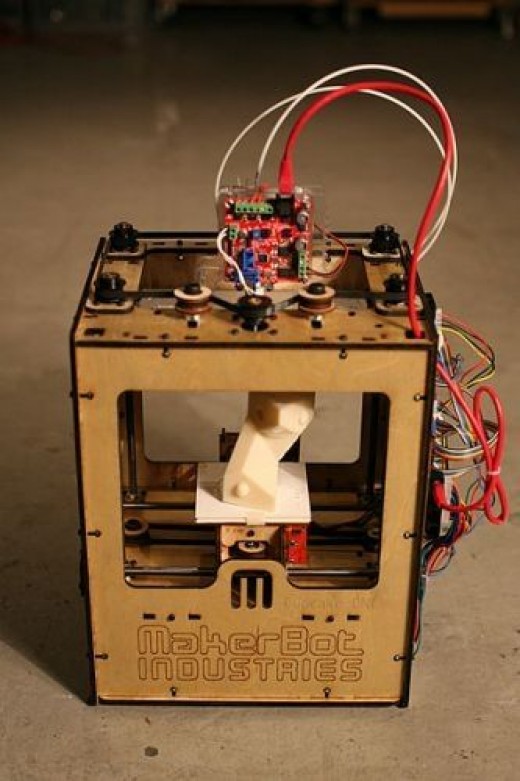
3D printers work by laying down layers of material, usually from spools of thin plastic filament in various colors. They lay down the first layer by spraying the material, back and forth (and not spraying where there isn't supposed to be any material), across the plane until the first layer is printed, and then printing a second layer on top of that, and so forth.
This is a MakerBot printer, with a three dimensional plastic object just about completely formed, sitting in it.
Image credit: Bre Pettis, licensed under Creative Commons Attribution 2.0 Generic.
Printed Heads
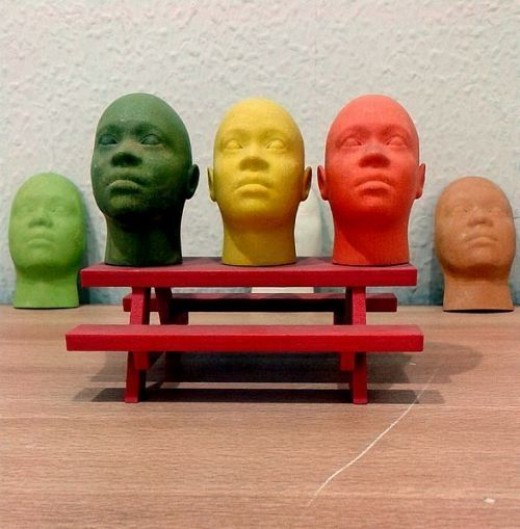
The photo speaks for itself. Realistic sculptures of human heads are one possibility.
The photo is by S zillayali, licensed under Creative Commons Attribution-Share Alike 3.0.
The Process
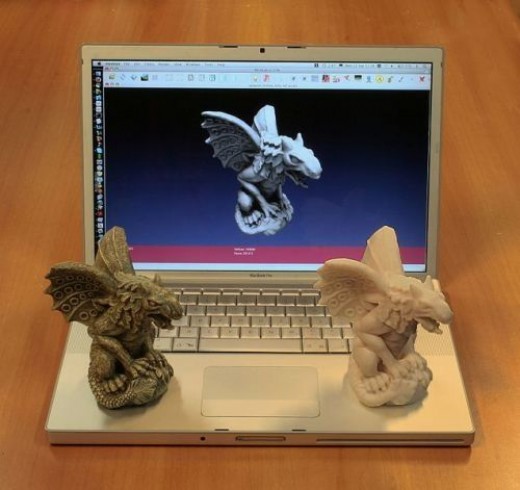
This photo shows the process by which a 3D object is printed. The dragon on the left is the original. It is scanned (this is something I am not familiar with), and then a computer file instructs the printer to print the object. The results are on the right.
Google makes a software program called Sketchup which is used to create the computer files.
Download it for free: Sketchup.
Again, I haven't used this software YET. I can't vouch for how effective it would be, or whether I would be able to take an existing Xenodream file and somehow convert it in this software to print one of my fractal sculptures.
The photo is by ALoopingIcon, and licensed under Creative Commons Attribution-Share Alike 3.0.
3D Fractal Sculpture
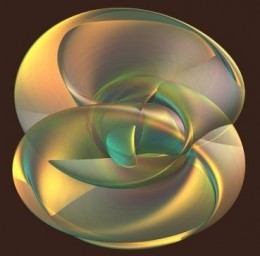
This image was made with Xenodream, designed by Garth Thornton. This and several similar ones are what I would like to have printed by a 3D printer. I can prove it is 3D because I have a stereogram, and you can see that it is truly a 3D object. To my mind, it doesn't even really look like a fractal, yet it is.
In the next few weeks, I will talk to Garth and see if I can produce a computer file that can be used in this way. Then I will go to Staples and find out how much it would cost to print it. I hope I can afford it!
This will be a bit of a tricky project because it has to be translucent, and there can't be any supporting structure on the interior. The fractal itself IS translucent. The surface also has to be very smooth. I hope it can be done.
Stay tuned. I'll let you know how it goes.
Useful Links
Links to information about 3D printers, to sites where they can be ordered.
Commercial printers are considerably more expensive. These are intended for home use, primarily. As of yet, I have no experience with them, but am seriously considering buying one.
- 3D Printing
This is a good and fairly comprehensive description of the printers and how they work. Wikipedia. - Solidoodle 2nd Generation
$500. Makes models up to 6 inches. - Solidoodle 3rd Generation
$800. Makes models up to 8 inches.
3D Printers Available for Order on Amazon
These printers are ordered from the company through Amazon and are shipped from China after they are ordered. It is said to take just a few days for them to be shipped. Some printers are actually manufactured after the order is placed. This does not appear to be the case with these.
In addition, Amazon sells spools of filament in various colors.
Not entirely relevant - but still a 3D product from yesteryear
And lots of fun. I could use one of those!
Do they look interesting?




